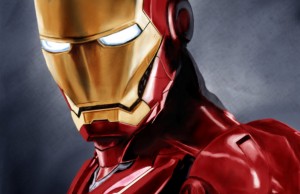Sometimes, the things that will lure students to be interested in a particular subject isn’t found in the material itself, but in related topics that they might not necessarily know are related. Science and maths tend to be the subjects that crawl to the top of that list most often. Students may be fascinated by cool chemical reactions and physics, but if you sat them in a chemistry or physics class and discussed textbook stuff that they can’t easily see the relevance, they might find themselves bored and disengaged. But if you talked about superheroes – or something similar that they were already interested in- and then applied the science to it, you might find yourself with students who were a bit more interested.
The handy infographic below takes a look at some of the science behind superheroes. While (obviously) many of these superpowers aren’t attainable for humans, teaching your students to critically examine and calculate the (potential) science offers a lot of benefit for them. Keep reading to learn more!
The Science Behind Superheroes
You probably already know that it isn’t possible for a human to fly unaided, and it is nearly impossible to lift a car (easily), but have you ever delved further in to the why attached to those ideas? Examining some superhero’s powers lets us take a closer look.
- Superman can lift up to 800,000 tonnes – which is 8 million times more than the average bench presser
- That means that lifting a 1kg bag of sugar would be the equivalent of 5, two tonne cars (factoring in Earth’s gravity)
- Scientists are studying geckos feet to see how they cling to walls – and how this might work for humans
- When an organism’s size is doubled, its mass is squared, so gravity is exerting proportionally more force upon it
- Thus, given that humans have a much larger mass than geckos, this is unlikely
- If Batman actually jumped from a 152 m high building, the 4.6 meters of electrically charged wingspan would allow him to glide for 349 meters at 109kph before plummeting to the ground at about 80kph
- When Storm sets off a lightning bolt, the energy created is about 500 million joules, or 120,000 calories worth of energy
- Thus, in order to produce a single bolt, Storm would need to eat 60 times the recommended daily calorie intake, or about 522 Big Macs per day
- Running fast results in increased oxygen intake. It would take Flash 2 million years to use the entirety of the Earth’s oxygen supply
- If he ran at just 1% of the speed of light, he would need to burn 75 million calories, or 146,484, 375 Mars bars. (burp!)
Reference: Edudemic.com




1 thought on “Attention Science Teachers: Here’s How Superheroes Work”
Edutainment website for teenagers